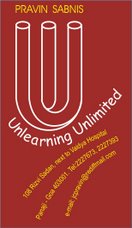Amrita Shergil is regarded one of the greatest avant-garde women of the 20th century and a pioneer in Indian modern art. At age 18, she wrote to her mother, ‘I have painted a few paintings. Everyone says that I have improved immensely; even that person whose criticism is most important to me: myself!’
Amrita rose to a path breaking legacy as she could note the positive transformations in her paintings at a young age of 18 years. She was able to create great works before she made an early exit at 28 years.
It is good to be one’s own critic. Through self-criticism one evaluates oneself. In psychology, it is typically treated as a negative personality trait which often leads to unhappiness and depression. But the critic must also be appreciative.
Too often, so many of us are over critical of our capacities and our capabilities. The quest for perfection in success, makes us judge ourselves harshly. We allow dark clouds of doubt and distress hover over our path.
Self-observation is a great thing when it does not eclipse the positives, even the smaller ones. In critical appreciation, the intent is to appreciate and the approach is critical. The focus is to see the positive by noting and working on the negative.
Critical Appreciation: two words
that define positive transformation
The first word spells the method, the second defines the intention!
- Pravin K Sabnis
#mondaymuse20thYear #pravinsabnis #since2004 #motivation


